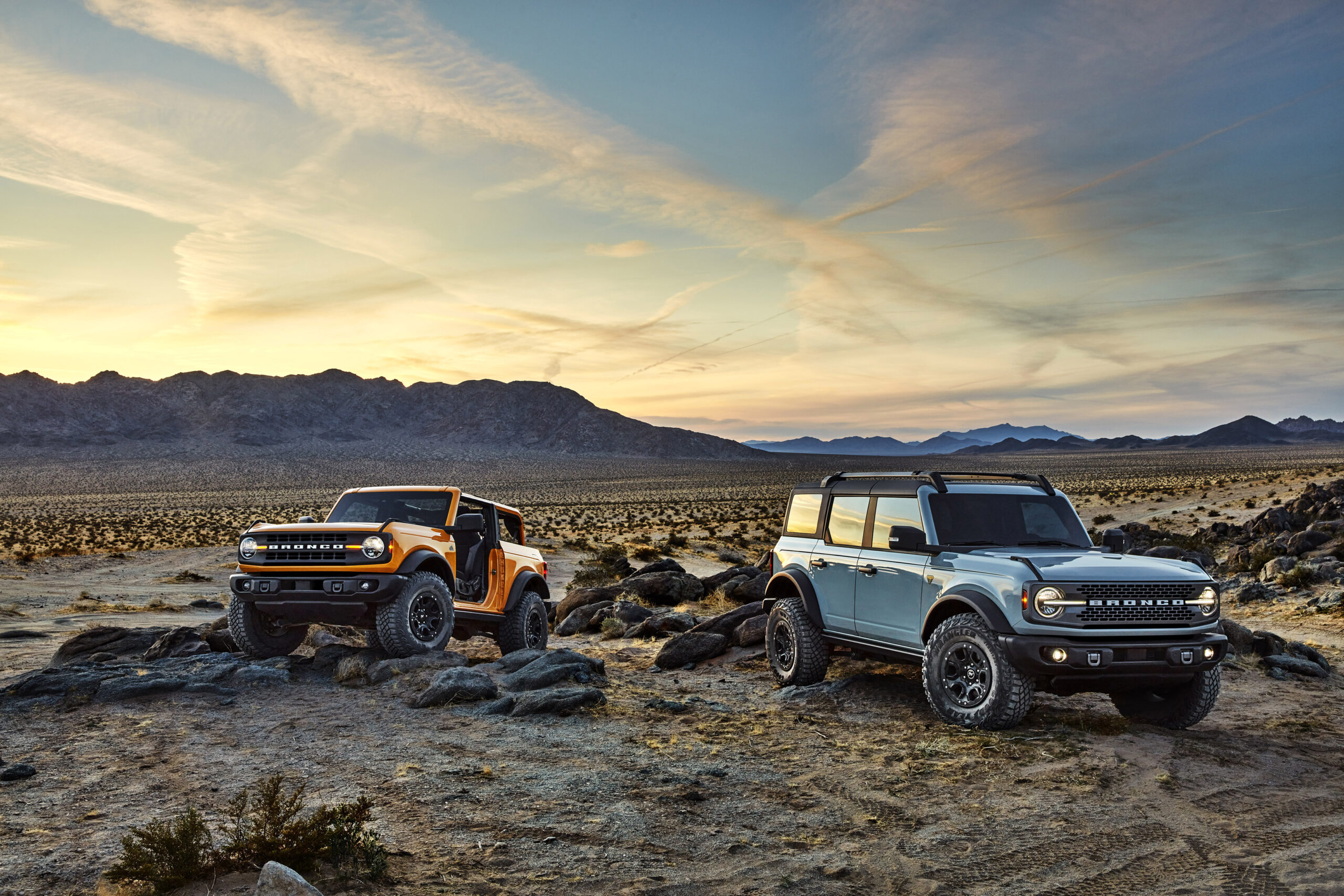2015 Corvette Stingray Z51 – At the Track
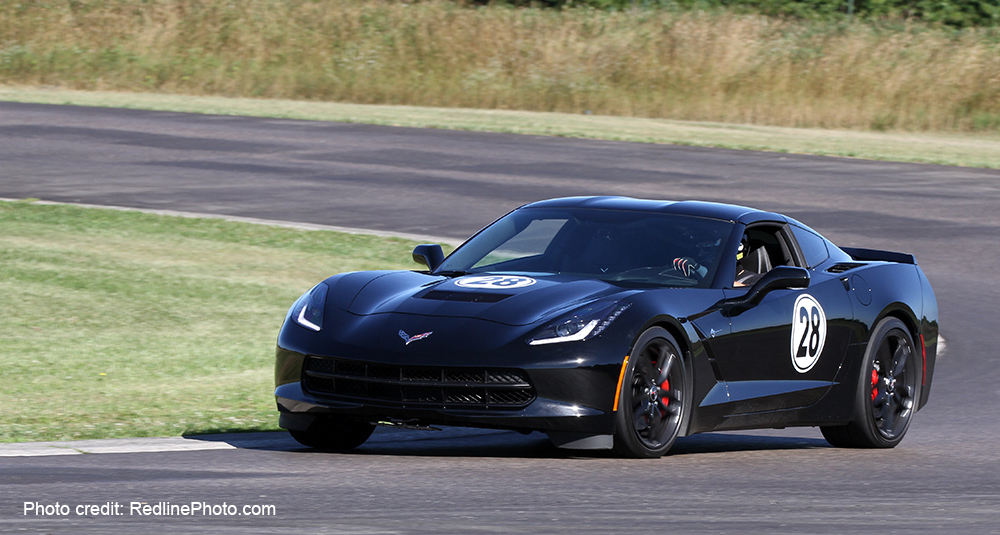
If you’ve read our street review of the C7, you know we think the new Stingray is one of the best sports car values on the market today. But today’s enthusiasts want something that works on the track just as well as it does on their commute, so we took the Stingray to Gingerman Raceway in South Haven, Michigan to see how it performs at the limit, and the Z51 came loaded for bear.
On the track, the Stingray’s best friends are the long, sweeping carousel-like corners where you can push the car to its maximum lateral grip, often pegging the C7’s onboard G-meter at 1.25. The best lap times are usually achieved towards a few laps in, after the driver and the tires have sufficiently warmed up. Despite the track being busy with many other impressive cars and drivers with varying degrees of skill levels, we managed an impressive 1:44 lap time. Cars that we passed included a new yellow Z06 automatic, several Porches, a Rossion Q1, Mustangs, Camaros, older Corvettes and even a Nissan GT-R. Let’s face it – in this Stingray, if you are a seasoned track driver you can do some serious ego damage to just about anybody else on the track.
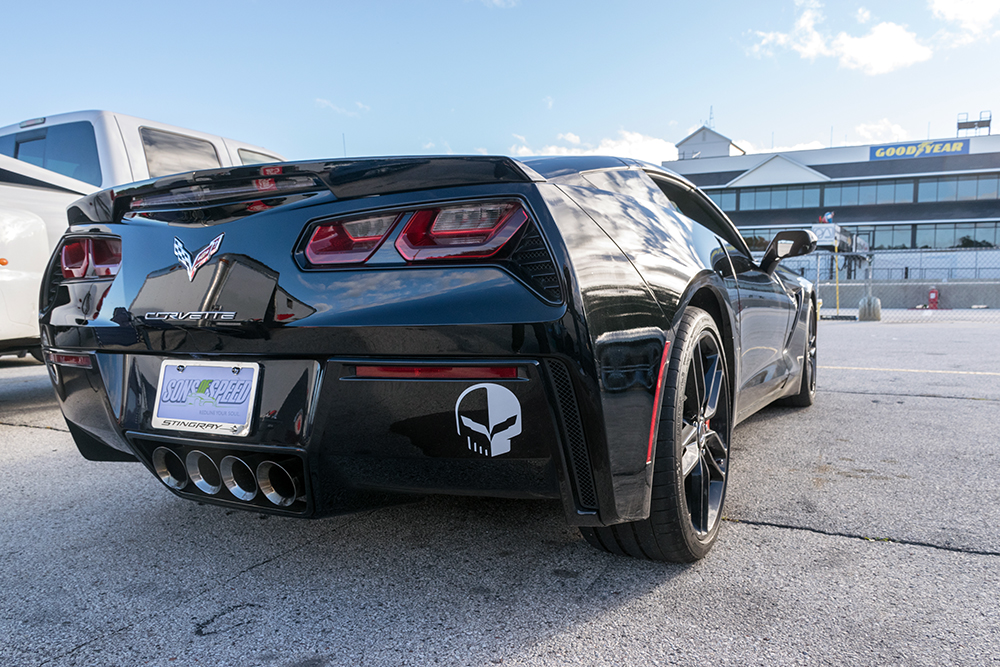
The Stingray attacks apexes with laser-guided precision, allowing you to take the optimal line time after time. If you miss an apex in the Z51, don’t blame the car. Turn-in is precise and the balance totally neutral – neither understeer nor oversteer await you mid-corner, the intended result of the even weight distribution, tight suspension and the electronic limited slip differential (eLSD). Speaking of that trick differential, it (along with Chevy’s Performance Traction Management system) means you can put the power down earlier as the systems work together to inhibit power-on oversteer. In short, the Z51 will make you a better driver than you really are, allowing you to power out of corners with the confidence of a chassis driving all four wheels. While in those high-G turns, the improved seats do a great job keeping you in place. We just wish there was a pad where the driver’s left knee will inevitably brace against the door. Instead, you get a speaker grill. Our advice: bring a knee pad.
Braking in the Z51 will – quite literally – take your breath away as your chest is compressed by the G-forces against your seatbelt. From the outside, there is a definite pitch forward – so much so we were surprised not to have scraped the front rubber air dams (we came damn close). The deceleration numbers for the Stingray are in a way more impressive than its blistering acceleration: 60-0 takes only 107 feet with a firm pedal that, with the right brake fluid, only exhibits the mildest fade after repeated laps. The Z51 includes dedicated brake cooling ducts in the lower corners of the grill, so should the pedal get a little soft, one easy lap is usually all it takes to bring the firmness back to normal. Still, Chevy drops the ball by supplying the Stingray with regular and easy-to-boil DOT3 brake fluid. GM’s DOT4 isn’t much better.
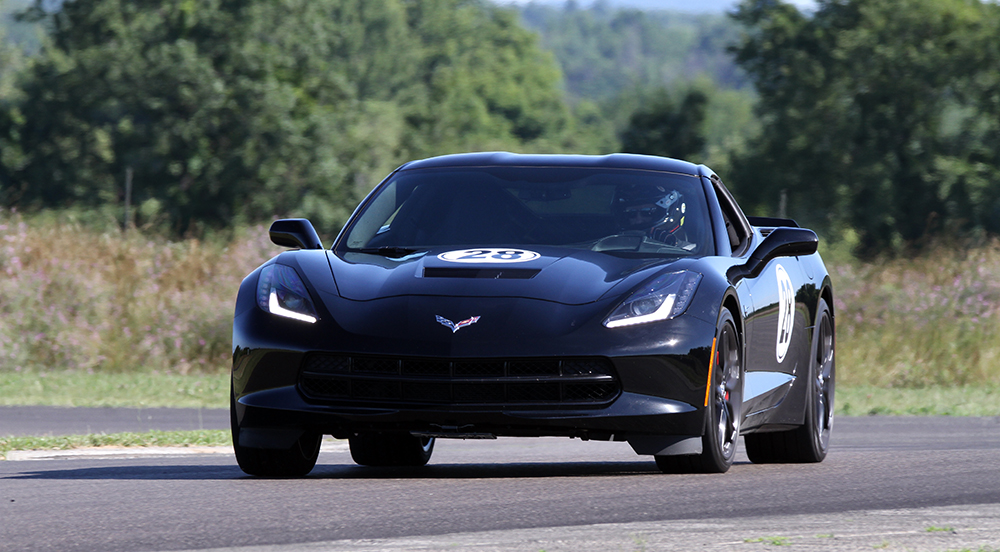
Photo credit: RedlinePhoto.com
Braking is also where the rev-match feature really shines, as smooth downshifting becomes nearly automatic. As you slide the gear lever into the lower gear, the computer blips the throttle perfectly to match the driveshaft speed – all you have to do is let out the clutch and enjoy the jerk-free perfect shift on which you and the Stingray just collaborated. Corner workers will later congratulate you on your heel-toe proficiency, as the sounds outside the car are simply music to any track junkie’s ears. If you’d rather do the job yourself, you’ll find the pedals perfectly spaced for street shoes, but a little too far apart for those fancy (and narrow) racing shoes you just splurged on. We found a pair of running shoes worked best.
Chevy recommends a few things before taking your new Corvette out on track. First, you will need to break the car in by putting at least 1,500 miles on the car, and you’ll need to properly bed your brake pads to the rotors. Before each track event, you are also expected to change the oil to a heavier 15W-50 Mobil1 to better withstand the higher temps the engine will reach on track and put the car into a track alignment. Lastly, Chevy asks you to install “cooling rings” on the Z51’s front rotors (the rings are supplied with the car) and then remove them afterwards. Every time. While we feel the rings are an afterthought of poor rotor design, we’ve eliminated the issue altogether by installing new Disc Brake Australia (DBA) front brake rotors, which do a better job handling the massive heat generated by repeated decelerations from triple digits. We went a few steps further getting this car ready for the track by flushing out the stock DOT3 brake fluid for some DOT4 ATE200 high-temp fluid and swapping out the standard brake pads with Carbotech XP12’s up front and XP10’s in the rear. The Carbotech pads are designed for track use and can better handle the extreme temperatures of repeated hard braking without fading. Lastly, we reduced the air pressure in each tire from the recommended 30 psi for the street to 26 psi, as the tires rapidly warm on the track, raising the pressure dramatically during the run.
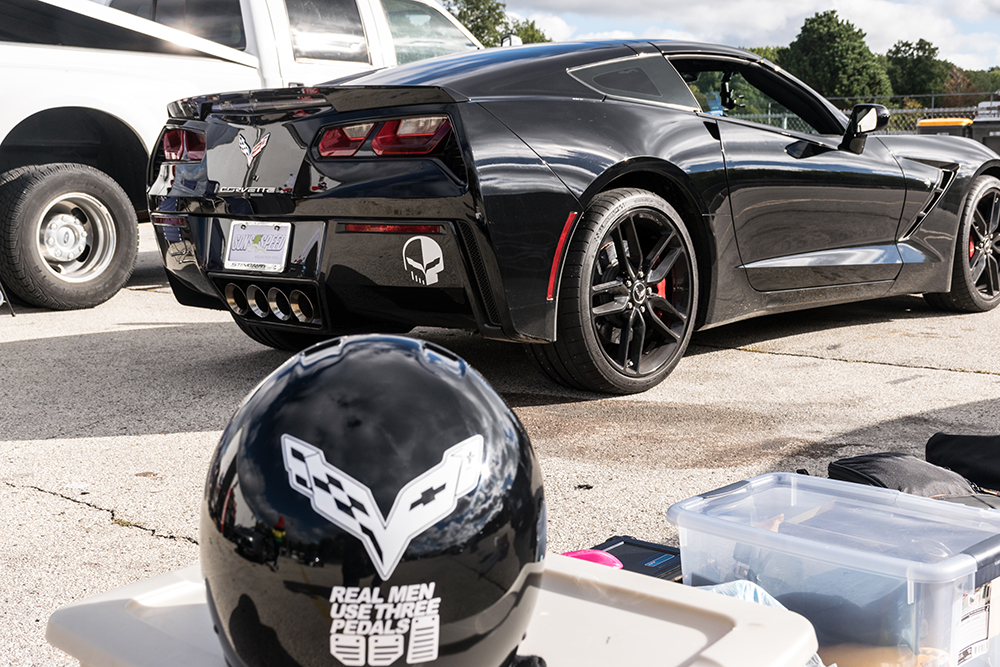
If you plan on spending any time on a racetrack, one of the best investments you can make is to opt for the first-of-its-kind Performance Data Recorder. Introduced for the 2015 model year, this is one of the coolest tools ever put in a production car by any manufacturer. The system includes a 720p camera in the windshield along with a recording system (with sound) you control from the MyLink interface. You can select from a variety of data overlays, and the data and video are saved to an SD card located in the passenger glove box. The data is acquired using GPS satellites, but at a much faster rate – 5 hertz per second – than a normal vehicle’s GPS (1 hertz). This fast data rate allows the Corvette’s PDR to accurately record acceleration, lap times, speeds and cornering forces. You can watch the videos right from the in-dash screen, or download the video and data to a PC where you can use some very cool software from Cosworth to analyze your performance to help you improve your lap times.
To have the PDR system record lap times, you just need to mark the location of the start/finish line and the system will then remember that exact spot for the rest of the day. We recommend doing this at the end of your first warm-up lap. Lap times are automatically calculated, showing the current, last and best times, and are also overlaid onto the PDR video along with cornering forces, steering angle, tachometer and meters for the gas and brake pedals. When not on track, the system makes a great dash cam as well. YouTube anxiously awaits your exploits.
So why buy a Z51 over the new, more powerful Z06? Well first, there’s the nearly $25,000 premium (even more if you opt for the Z07 performance package). Then there’s the question as to whether you can really handle 650hp, especially if you’re coming from something with much less power. If that’s the case, the Z51 might be the perfect stepping stone to learning how to handle a car that can rocket to 60 in less than 4 seconds. If weekends at the track are in your plans (and with this car, they should be), another more practical reason would be replacement costs – the Z07’s carbon ceramic brake pads will run you $2,000 to replace. The rotors? Try $12,000. Now those are dealer prices, but even assuming one can find those parts online for even half that cost, we’re still talking $7,000 for parts the average track-used car will wear out with regular frequency. What about parts for the Z51? Try $83 per rotor and a few hundred for brake pads. For the average Joe without a racing team sponsor or a trust fund, then, the Z51 fits the bill quite nicely.


